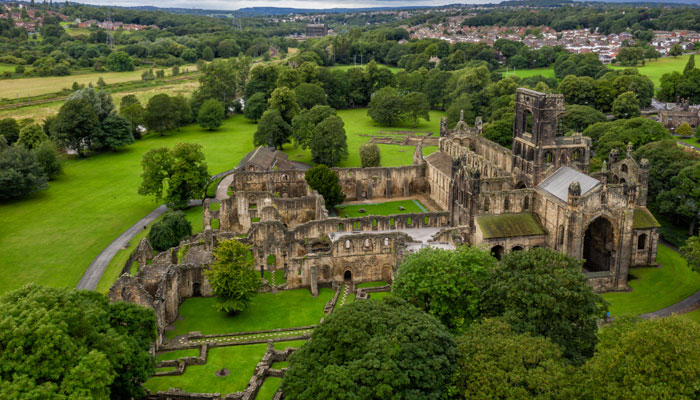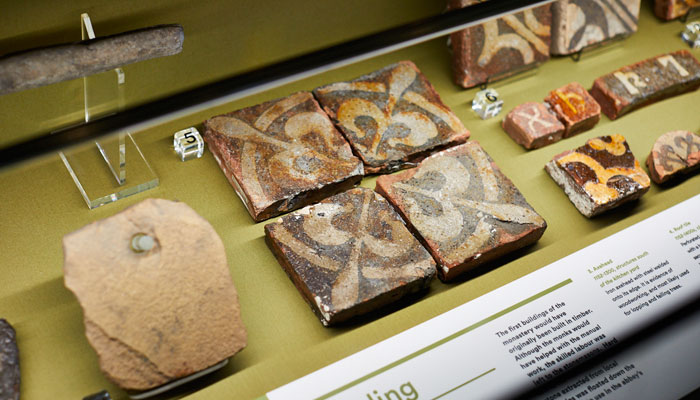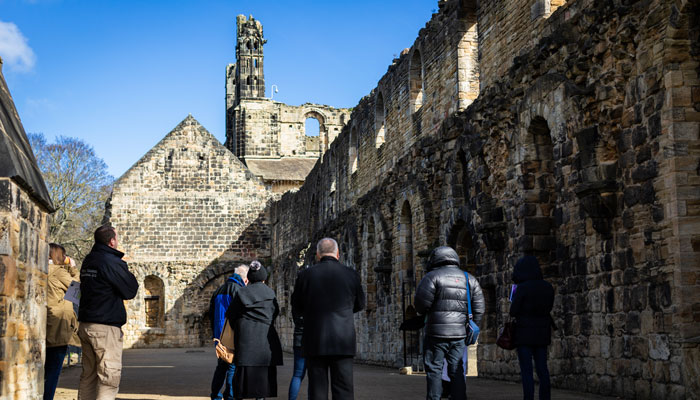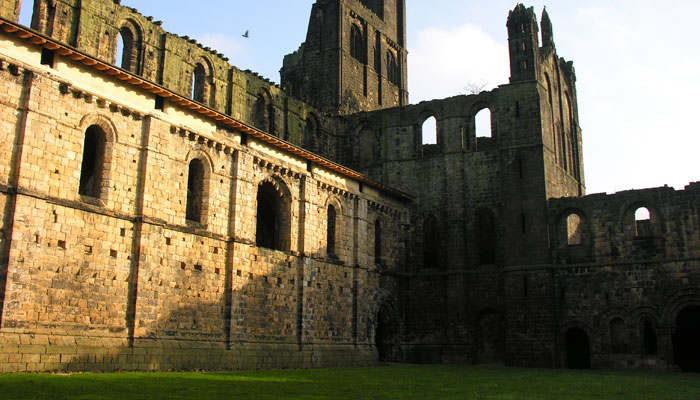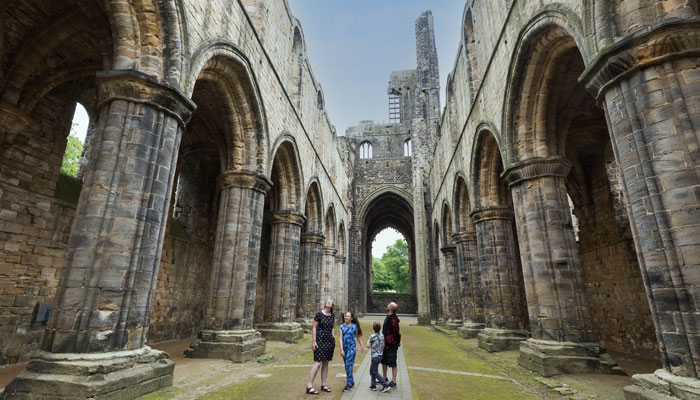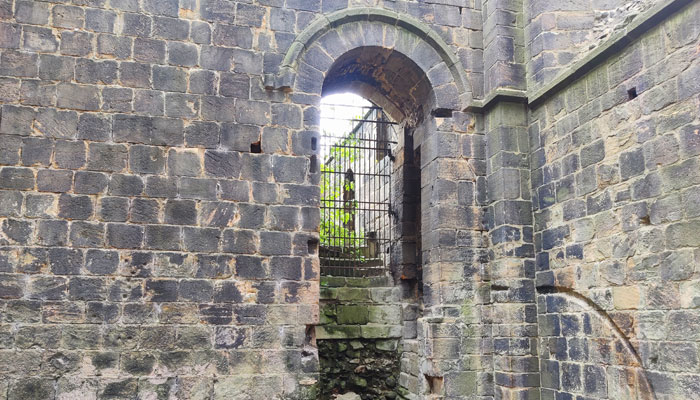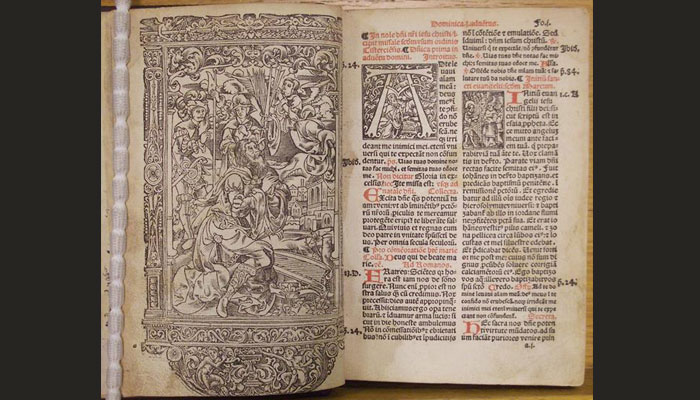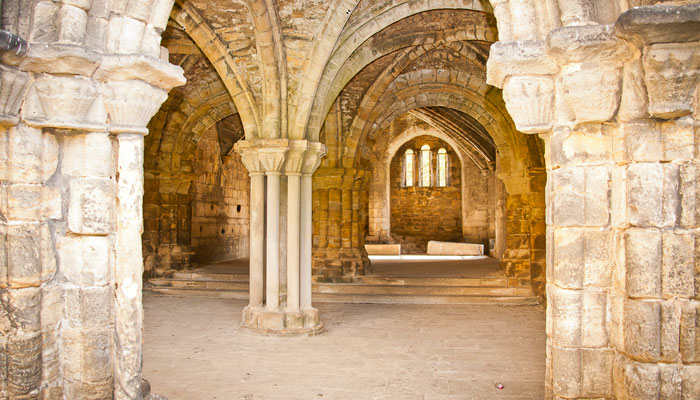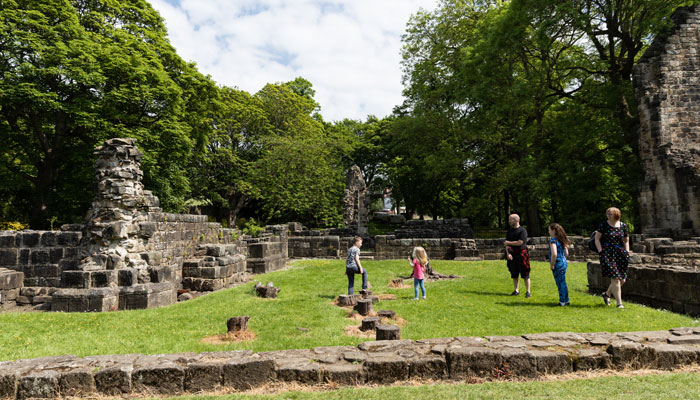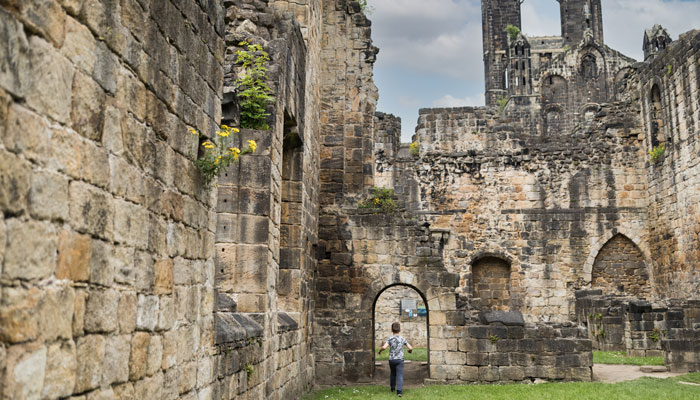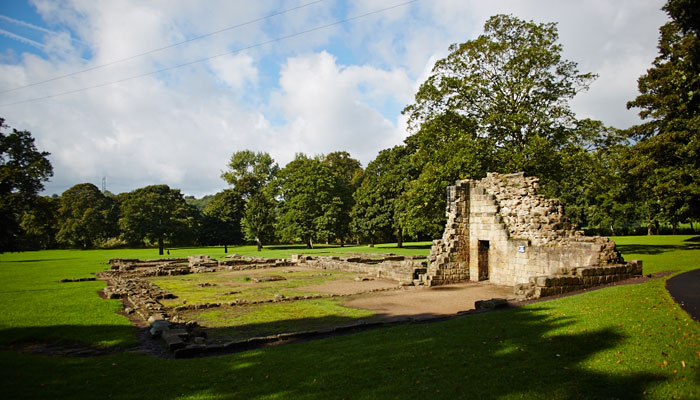INFORMATION
FREE AUDIO GUIDE
DATE: Available all day during abbey opening hours
LOCATION: 10 locations across the abbey ruins
DURATION: 2- 4 minutes each
HOW TO LISTEN: Scan the QR code on the information boards or follow the short URL
Discover the history Kirkstall Abbey and the people who lived and worked here with our new audio guide.
Tales of Kirkstall Abbey is a series of short conversations with different people who work at the abbey today. The guide provides an immersive experience of ten areas across the ruins, highlighting some of the fascinating stories from its past.
The informal audio guide provides an insight into the lives of people who were involved in the abbey, including the interesting roles of the Cistercian monks in the 1100s, the experiences that overnight guests would have had, and the ultimate downfall of the abbey by order of Henry VIII.
The trail is accessible for free via your smartphone. Please scan the QR code on the information boards or follow the short URL.
Please note headphones are not provided. Visitors are welcome to listen to the trail with or without headphones.
Entrance to the ruins is through the visitor centre/shop.
Welcome
Welcome to Kirkstall Abbey’s audio guide. Scan the QR codes or follow the short bit.ly links around the ruins to hear short conversations with different curators and team members.
Visitor Centre
Welcome to Kirkstall Abbey Visitor Centre. Here you will be introduced to the abbey ruins and find out what the building was originally designed to be used for.
Cellarium
Hear a short conversation with Kat Baxter, our curator of Archaeology at Leeds Museums & Galleries. Find out what a Cellarium was used for and who used the space.
Cloister
Hear a short conversation with Patrick Bourne, our Assistant Community Curator at Leeds Museums & Galleries. Discover what the Cloister was used for by the monks of the abbey.
Church
Hear a short conversation with Kat Baxter, our curator of Archaeology at Leeds Museums & Galleries. Find out about the Church and its importance to the monks of Kirkstall Abbey.
Night Stairs
Hear a short conversation with Sarah Allen, our Learning and Access Officer at Leeds Museums & Galleries. Discover what the Night Stairs were used for and the role they played in every day life.
Library
Hear a short conversation with Sarah Allen, our Learning and Access Officer at Leeds Museums & Galleries. Find out about Kirkstall Abbey’s library and what happened to the books after the abbey closed.
In this section you can also discover the Cistercian Missal, a liturgical book used by the monks and one of only ten copies known to have been in the North of England before the monastery was closed. See the Missal at Leeds Central Library.
Chapter House
Hear a short conversation with Kat Baxter, our curator of Archaeology at Leeds Museums & Galleries. Discover what the Chapter House was at Kirkstall Abbey and how the space changed over time.
Infirmary
Hear a short conversation with Patrick Bourne, our Assistant Community Curator at Leeds Museums & Galleries. Explore the ruins of the Infirmary and find out who was treated here and the types of treatments that took place.
Warming House
Hear a short conversation with Kat Baxter, our curator of Archaeology at Leeds Museums & Galleries. Discover what the Warming House was used for and the role it played in the monks lives at Kirkstall Abbey.
Guest House
Hear a short conversation with Kat Baxter, our curator of Archaeology at Leeds Museums & Galleries. Find out about the Guest House, what made it different to the rest of Kirkstall Abbey, and the stories of its inhabitants.


